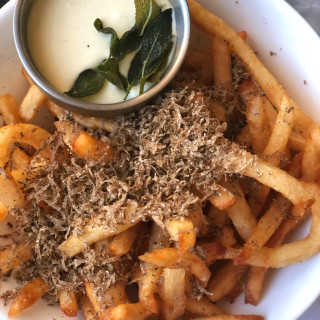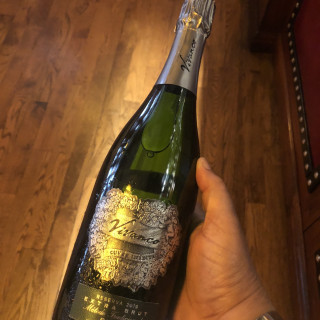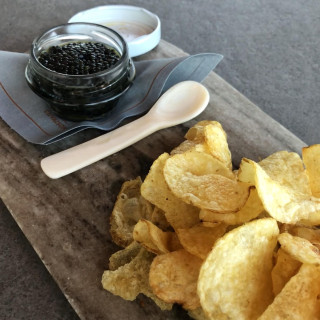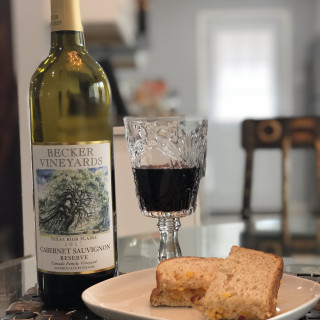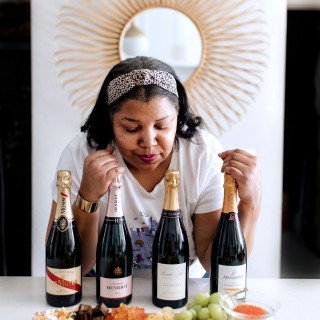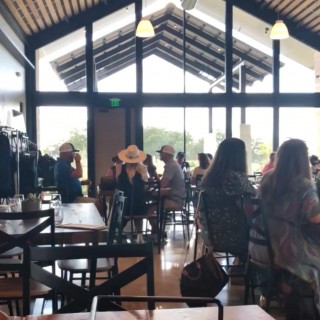 After quite a bit of a hiatus, look who’s back at the helm of her blog, y’all!
After quite a bit of a hiatus, look who’s back at the helm of her blog, y’all!
I’m finally circling back with the review I promised from an IG post from a couple of weeks ago about my recent less than optimal experience with the 2008 Le Brun de Neuville Grand Vintage!
So, first things first: this wine DEFINITELY didn’t taste *bad* but it most certainly did not live up to what you’d expect from a 2008 vintage wine.
After an initial glass, I experimented with temperature (chilling it, letting it warm up a bit), giving it lots of aeration, trying it 2 days later, and even allowing some to go flat so that I could get the essence of the wine.
I was still left woefully disappointed.
There was no richness and complexity in the glass. The flavors of the wine were muted. The acidity was lacking. There was none of the razzle dazzle and finesse you’d expect from the storied 2008 vintage. It was such a totally unexpected *womp, womp* wine moment.
HOWEVER, you might be surprised to hear me say that there’s no reason to write this wine—nor the winery—off! There were definitely some lessons learned from this tasting experience that I want to share with you that will help explain why.
5 Lessons Learned from a Less Than Optimal Champagne Sipping Experience:
1.) Vintage year champagne should typically be exceptional but that is not necessarily a 100% guarantee.
Vintage years are typically declared in years that the region has generally experienced outstanding weather conditions. HOWEVER that’s not a guarantee, since it’s still up to the Maison’s winemaker to coax the magic from those vintage grapes. And here’s another fun fact about vintage champagnes: there aren’t necessarily any hard and fast rule on which years are vintage years, so some champagne houses will declare a vintage year in a year that other’s don’t or won’t.
2.) If you don’t particularly enjoy a wine the first time you taste it, don’t give up on it—give it a little air, some space, and time and see if anything changes instead!
As wine lovers know, things like temperature (a too cold white wine will have aromas and flavors muted; and a too warm red can overpower your palate, for example), decanting (allowing wine to have contact with air can deepen and intensify the flavors of a wine), and even pairing it with food can change your entire tasting experience for the better.
In short, just like in some relationships, a little time and space can change things for the better (wink).
3.) It IS possible for a vintage wine to be past it’s prime if you hold on to it for too long.
So, any wine can be past it’s prime, of course, but vintage wines are typically built for, and can handle, continued, additional, longer ageing after it’s been purchased.
However, when it comes to ageing, the number of years the champagne has already spent on the less, the blend of the cuvee, and how it’s stored at your home, for example, can all impact how long a wine can remain bottled before it reaches its peak–and then quickly declines.
It’s just like Kenny said: Know when to hold ‘em, know when to fold and drink ‘em.
4.) Always remember that transport conditions can absolutely have a negative impact and effect on a wine.
Since champagne only comes from the champagne region of France (How many thousands of times have you read or heard THAT said in the last few years, haha), which equates to them having to be imported.
This could mean any given bottle needing to travel on planes, trains, automobiles, or boats, including any combination of them all. This brings 3 big factors into play that can ruin wines, especially delicate sparkling ones: temperature, light exposure, and vibrations. Things like flat, cloudy, or oxygenated wines can be the result.
Even the most carefully transported wines can occasionally fall victim to one of these factors, unbeknownst to the consumer making a purchase at the retail level.
The risks are small, but it definitely can happen!
5.) You can’t judge a wine—or an entire champagne house—by a singular less than stellar bottle or sipping experience.
Think about what life would be like if we were judged or the entirety of our lives were categorized by one (or a couple!) bad decision or choice… we would feel that was unfair, right?
Remember to apply that same ideology when it comes to your wine drinking experiences!
Here’s a final, fun prologue on this sipping experience: as is my usual practice, I looked up this wine after I’d experienced it and discovered a couple of things: First of all, it appears that there is a new label design from the one that I tried, which leads me to believe that it’s possible that there may have been tweaks made with this wine since I originally purchased it.
Second, this wine was actually rated 90+ points by some pretty reputable people and entities. Intriguing, no?
That said, I have a 2nd bottle of this champagne (purchased at the same time) and I’m trying to decide if I should hold on to it to see if it gets greater later, or open it soon to see if the 1st bottle was just a fluke. And guess what? I’m actually going to DOUBLE DOWN and buy one of the bottles with the new label on it to explore things even further!
So weigh in and let me know what you think I should do, bubbly lovers: pop the cork on bottle number two, or hold off!
